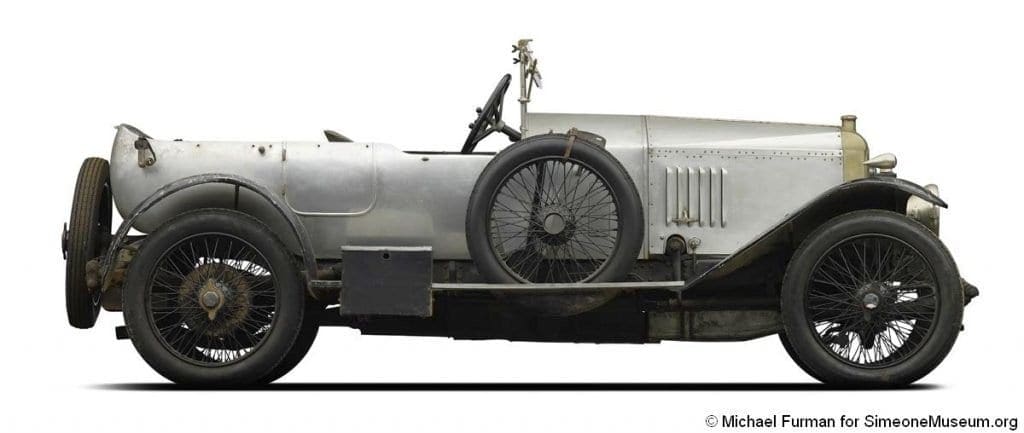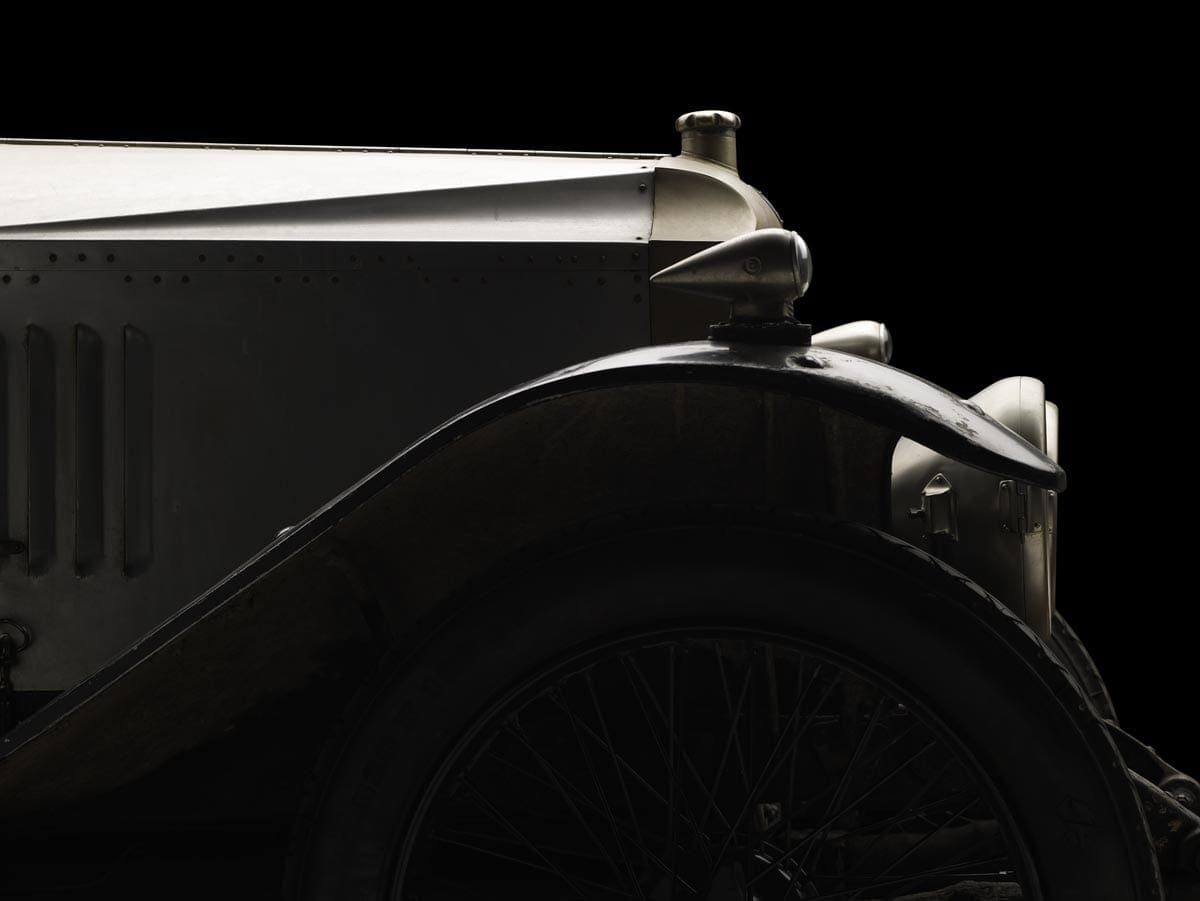We gained this car sight-unseen using a family Christmas card as the only reference picture. It is a genuine “barn find” in original, unrestored condition.
THESE CARS
The story of the development of this great Edwardian cum vintage sports car well known and I will only mention it briefly. As the result of encouragement by Joseph Higginson (inventor of the Autovac) to Vauxhall chairman L. H. Pomeroy in 1913, a series of motors were made to propel the great Prince Henry model’s light chassis to success in a variety of competitions.
Before World War I, the 30/98 chassis was already making a name for itself climbing up the Shelsley Walsh in 55.2 seconds with four passengers aboard! After the war, the first version, the E-Type, went into catalog production. It was the first stock British car to guarantee 100mph in stripped form. Over 200 of these had been produced until 1923, when the engine got redesigned, reduced in size and converted to pushrod overhead valves (the OE-type), of which over 300 were made. The Achilles’ heel of the more vintage E-Type was rectified in 1923 when front-wheel brakes were added to the OE version.
E-Type engines gave about 90 bhp at 2,800 rpm and pulled a high 3:1 axle ratio with a top speed of approximately 85 miles per hour when wearing the well-designed, light, all-aluminum body. Despite these significant performance advantages, Vauxhall never entered big-time racing, but it is noteworthy that in 1953, a restored 30/98 covered 107 miles in one hour on the rough track at Montlhéry. This performance justified the maker’s boast “a sporting car which has never known a superior.”
OUR CAR
In 1988, I got a call from Dave Brownell, vintage automotive expert, sleuth, author, and a great friend. He told me of a Vauxhall available in Canada, but there were very few specifics. I contacted the attorney who represented the estate of Hugh Hansard, senior partner in Montreal’s largest law firm and former president of the Canadian Bar Association. They told me that Mr. Hansard had been dead for many years and that they had laid the car up for about two decades, put away in excellent condition.
The representatives of the estate could not tell me exactly what model number their car represented although they gave a fair description of its condition. I directed them to the serial number plate and learned, in fact, that this was the desirable E-Type 30/98. Vauxhall made lesser cars, with unimpressive performance, which had little value then and even now. The 30/98, however, was the leading British sports car prior to the 3-liter Bentleys and the choice of the wealthy, young sportsmen.
My interest was piqued as they described the condition. Original upholstery throughout. The body was all aluminum with tatty paint on the wings. Everything seemed to be intact, according to the representative. However, it was in a tight shed where it had been put up decades ago, and pictures were almost impossible to take. It was a matter of trust!
Previously, I had a letter from a family relative, Welsford MacArthur. He reported “I enclose a picture, a photocopy of what appears to be part of a Christmas card sent out in 1957. The driver is the son of one of the co-owners. (They inherited the car from their father.) The co-owners, as I call them, are twins, the only children of Mr. Hansard.” Scant other information available showed that the barn was on Mr. Hansard’s vacation property in Quebec, where he would drive it during his holiday, occasionally taking it into parades. This is all we know.
My research at the time revealed that there were only 34 E-Types still in existence of the 275 E-Types built. This is in contrast to 133 OE-types from a series of 312. For many people, me in particular, the less refined more Edwardian E-Type was the preferable car because it stood alone as the great British competitor, whereas the 3-liter Bentley soon supervened the OE in just about every way.
You can’t imagine the excitement waiting for the car to arrive, a mystery based on one cramped front snapshot, with Dave George there excitedly waiting for the delivery truck. We were absolutely delighted. The car was an intact 30/98, virtually untouched, with the aluminum body in excellent condition, though the black fenders had spots of paint loss. Our immediate decision was that we should preserve this car. We removed the seat covers, which revealed excellent intact leather on the seats and door panels. The dash was complete and fascinating to look at. The huge gas tank pressure air pump on the passenger side somehow gave the whole fascia plate a vintage airplane feel.
Today we exhibit the car in a dirt-covered hill climb diorama. We have not removed the caked mud under the fenders, and its condition suggests it needs a good washing. We have had to do little to this car to make it in top shape.

A sporting car which has never known a superior.
1921 Vauxhall Company Marketing Advertisement















